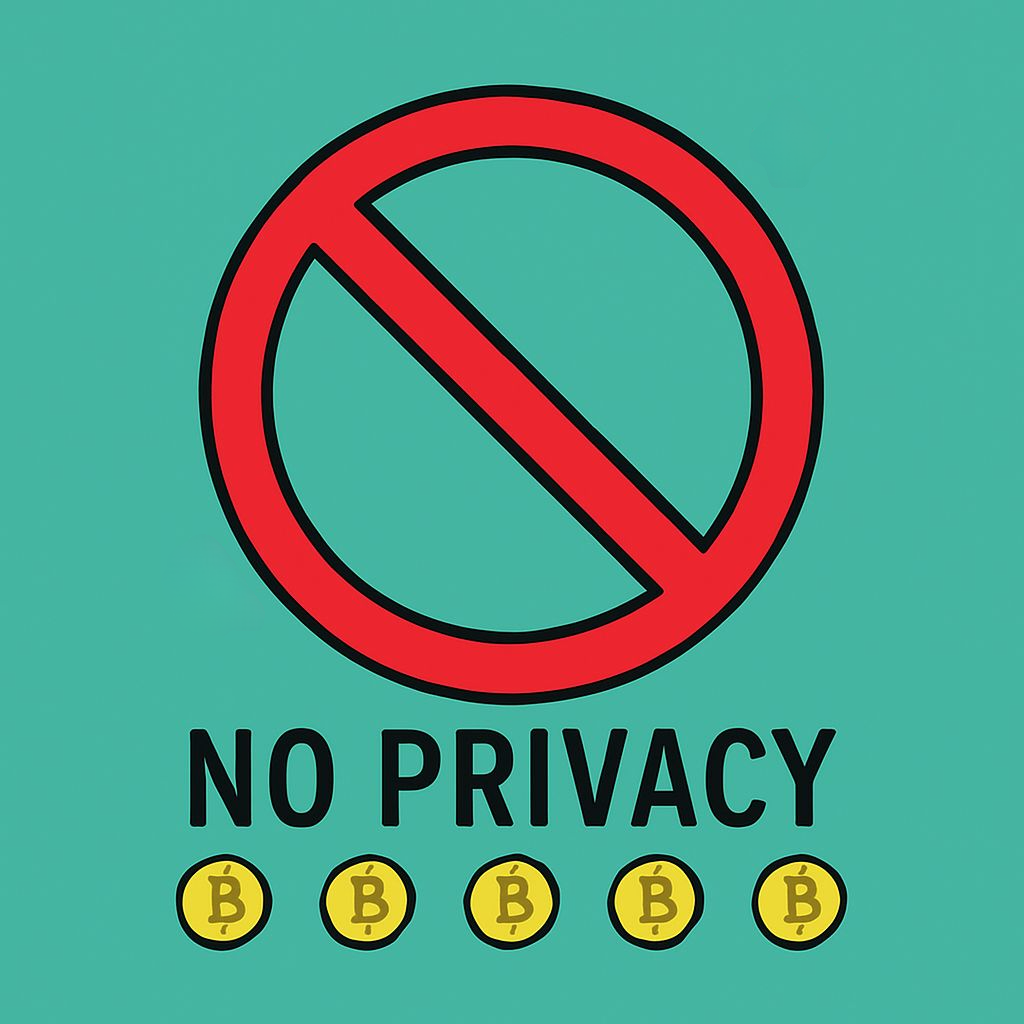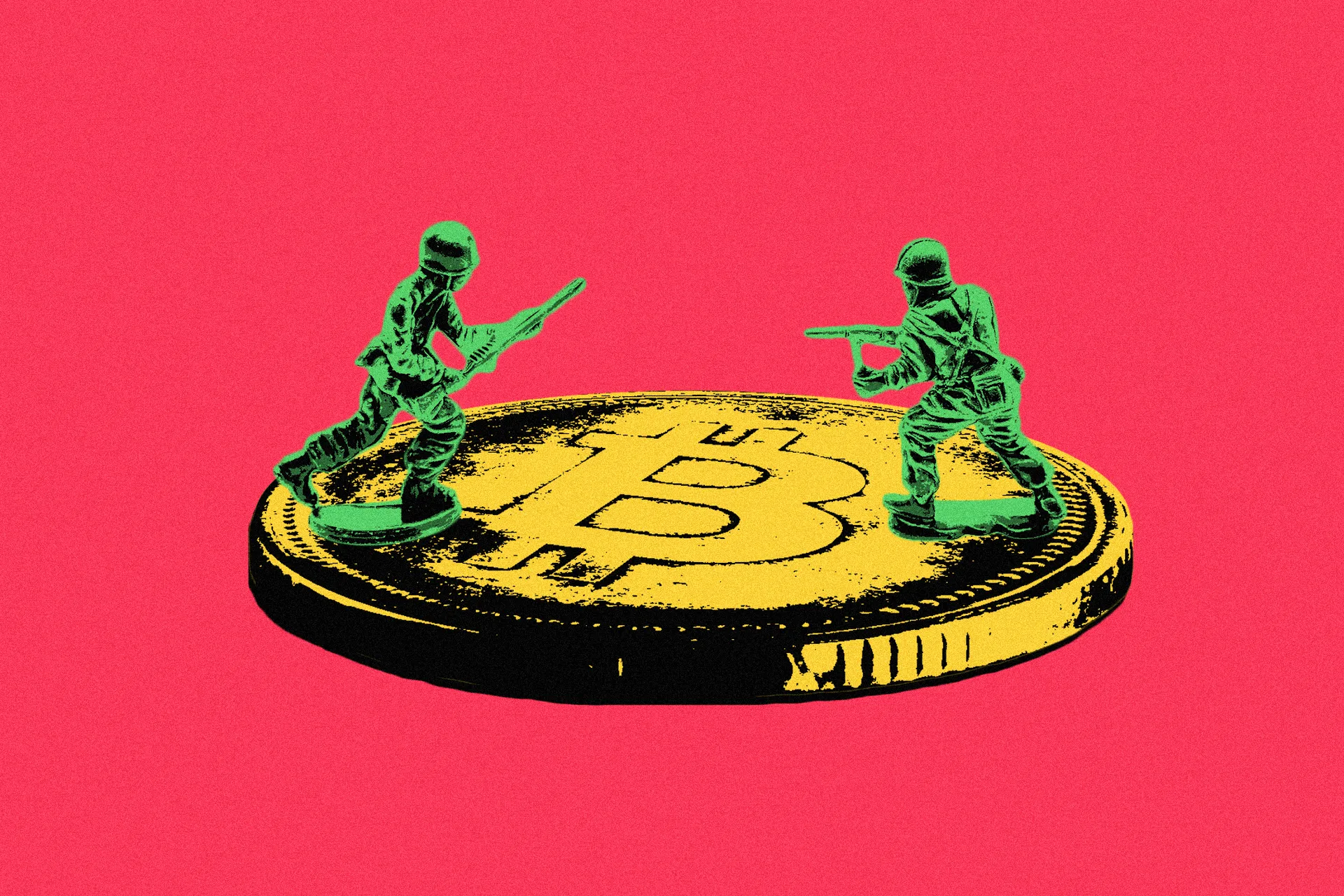What the Blockchain Reveals

In the early days of cryptocurrency, Bitcoin was heralded as a revolutionary force for financial freedom, promising pseudonymity and decentralization away from the prying eyes of banks and governments. Yet, as the ecosystem has matured, a stark irony has emerged: the very transparency that underpins blockchain technology—its immutable, public ledger—has become one of its greatest vulnerabilities. While this openness ensures trust and verifiability in a trustless system, it also exposes users to unprecedented levels of surveillance, data exploitation, and personal risk. This deep dive explores the profound downsides of full transparency and the lack of privacy in crypto, delving into what the blockchain truly reveals about transactions and users. Drawing from expert insights, including a pivotal interview with finance veteran Petro Golovko, we'll unpack the technical, social, and economic implications, while examining why privacy isn't just a feature—it's essential for crypto's survival.
What the Blockchain Reveals: A Window into Your Financial Soul
At its core, blockchain is a distributed ledger that records every transaction in a chain of blocks, each containing data like sender and receiver addresses, amounts transferred, timestamps, and sometimes metadata. Unlike traditional banking, where transaction details are siloed within private databases, public blockchains like Bitcoin and Ethereum make this information accessible to anyone with an internet connection. Tools such as blockchain explorers (e.g. Blockchair or Etherscan) allow users to query any address and view its entire history—inflows, outflows, balances, and patterns over time.
But what does this really expose? Transactions are pseudonymous, meaning they're linked to cryptographic addresses rather than real names. However, pseudonymity is a thin veil. Chain analysis firms like Chainalysis or Elliptic use sophisticated heuristics to cluster addresses and link them to real-world identities. For instance, if you withdraw funds from a KYC-compliant exchange like Coinbase, your wallet address becomes tied to your verified identity. From there, every subsequent transaction can be traced, revealing spending habits, income sources, and associations.
Consider a simple scenario: Lucy pays James 0.5 BTC for freelance work. On the blockchain, this shows as a transfer from one address to another. But if Lucy's address is linked to her exchange account, analysts can infer her salary range, track if she donates to certain causes, or even spot patterns suggesting medical expenses (e.g. payments to a clinic's wallet). In extreme cases, this has led to de-anonymization: during the 2022 Ronin Bridge hack, hackers' wallets were traced back through transaction graphs, exposing their movements. Public ledgers also reveal network-level insights, such as wallet balances that signal wealth concentration—think of "whale" addresses holding millions in crypto, which can be monitored for market-moving sells.
Beyond individuals, blockchains expose systemic data. Smart contracts on Ethereum, for example, often store executable code and state data publicly, revealing business logic or user interactions in DeFi protocols. This transparency, while enabling auditability, creates a "world's least private diary," where every financial move is etched in stone for eternity. Once data is on-chain, it's immutable and indelible—no right to be forgotten exists here, amplifying privacy concerns in an era of data breaches and AI-driven surveillance.
The Downsides of Full Transparency: From Surveillance to Exploitation
Transparency in blockchain is often touted as a virtue, preventing fraud through collective verification. Yet, this "auditability with exposure" flips into a nightmare when over-applied. One major downside is the erosion of personal security. High-profile crypto holders have faced physical threats after their wallet balances were publicly visible; in 2018, a Norwegian millionaire was kidnapped after attackers deduced his wealth from blockchain data. Similarly, during crypto bull runs, "dusting attacks" involve sending tiny amounts to thousands of addresses to map ownership networks, setting up targets for phishing or extortion.
For businesses, transparency undermines competitive edges. Imagine a company using crypto for payroll: public ledgers would expose employee salaries, supplier payments, and treasury movements, inviting industrial espionage or HR liabilities. Trade secrets evaporate when transaction patterns reveal supply chains—e.g. a firm buying raw materials from a specific vendor wallet. This isn't hypothetical; in 2023, on-chain analysis of NFT marketplaces like OpenSea revealed insider trading patterns, leading to legal actions but also highlighting how transparency can backfire into unintended disclosures.
Regulatory risks compound these issues. Governments love public ledgers for their traceability, aiding anti-money laundering (AML) efforts. However, this facilitates mass surveillance. The EU's MiCA regulations and U.S. IRS reporting requirements leverage blockchain data to monitor citizens, raising Orwellian concerns. In authoritarian regimes, this could suppress dissent—donations to opposition groups become visible, endangering donors. Even in democracies, privacy erosion fosters a chilling effect; users self-censor financial behaviors to avoid scrutiny.
Economically, transparency stifles innovation and adoption. Institutions hesitate to integrate crypto due to exposure risks; BlackRock's Bitcoin ETFs are "fiat wrappers" around assets, not true on-chain engagement, because full transparency doesn't align with corporate discretion. Scalability suffers too—public ledgers bloat with data, increasing storage costs and slowing networks, while privacy lapses deter mainstream users who expect banking-level confidentiality.
Finally, there's the dark underbelly: illicit activities thrive in the shadows of pseudo-anonymity, but transparency enables backlash. Privacy coins like Monero face regulatory scrutiny for enabling money laundering, yet without them, the entire ecosystem risks being painted as a tool for criminals. This paradox—transparency invites exploitation while curbing it—highlights blockchain's fatal flaw: it's designed for openness in a world that demands discretion.
Lack of Privacy: Broader Impacts on Users, Businesses, and Institutions
The absence of robust privacy in crypto ripples across society. For everyday users, it means constant vulnerability to identity theft. Transaction linking via "taint analysis" can reveal sensitive info, like payments to adult sites or political campaigns, leading to doxxing or discrimination. In healthcare, blockchain pilots for medical records promise efficiency but risk exposing patient data if not privatized properly.
Businesses face operational paralysis. In supply chain management, blockchain's transparency aids traceability (e.g. Walmart's food tracking), but it also leaks proprietary data to competitors. Private blockchains offer a workaround—permissioned networks like Hyperledger Fabric limit visibility—but they sacrifice decentralization, reverting to traditional databases with blockchain's overhead. This hybrid approach underscores the tension: full privacy often means less transparency, eroding blockchain's core appeal.
Institutions and governments grapple with compliance paradoxes. While public ledgers ease auditing, they clash with data protection laws like General Data Protection Regulation (GDPR), which mandates data minimization and erasure—impossible on immutable chains. Cyber threats amplify risks; hacks on exchanges expose not just funds but transaction histories, leading to cascading privacy breaches. Socially, this fosters inequality: tech-savvy users employ mixers or Virtual Private Networks (VPNs), while novices remain exposed, widening the digital divide.
Expert Opinions: Voices from the Frontlines
Finance veteran Petro Golovko, in an exclusive interview, lambasts public ledgers as a "design flaw," arguing that "no monetary system can survive if every transaction is permanently public." With 40+ years in gold and finance, Golovko compares crypto's transparency to the pre-SSL internet: unencrypted and unscalable. He warns that without privacy, crypto remains a "casino," not a viable alternative to fiat, as it exposes salaries, deals, and balances, deterring businesses and individuals alike. Regulators, he notes, exploit this visibility for control, stunting true adoption.
"Transparency is useful for auditing, not for living. A system where your employer, competitors, or even strangers can see your balance is not transparent — it’s unlivable. True trust comes from selective visibility: private by default, verifiable when necessary" - Petro Golovko, cryptonews.com
Other experts echo this. In a Wilson Center analysis, blockchain is dubbed the "world's least private diary," where inherent features hinder tracing illicit funds but enable broad surveillance. A Springer study highlights organizational challenges from excessive transparency, advocating balanced designs. Meanwhile, a16z crypto (a venture capital fund), debunks myths, clarifying that transactions are pseudonymous, not anonymous, inviting de-anonymization risks.
Pathways Forward: Privacy-Enhancing Technologies and Solutions
Hope lies in innovations like zero-knowledge proofs (ZKPs), which prove transaction validity without revealing details—used in Zcash and emerging Ethereum layers. Mixers like Tornado Cash anonymize funds but face bans for laundering ties. Privacy Pools, a smart contract protocol, allows users to prove compliance (e.g. funds aren't from hacks) via ZKPs without full exposure, creating a "separating equilibrium" between lawful and illicit use. Layer-2 solutions like Aztec on Ethereum embed privacy by default.
Yet, challenges persist: regulators view privacy tech suspiciously, and trade-offs include higher costs or reduced scalability. Golovko advocates "selective visibility: private by default, verifiable when necessary," urging a redesign akin to SSL's e-commerce boost.
Regulatory and Societal Implications: A Double-Edged Sword
Transparency aids compliance but enables overreach. The U.S. Travel Rule requires exchanges to share user data for large transfers, leveraging blockchain's openness. This could lead to the widespread acceptance of continuous financial surveillance, where AI scans ledgers for "suspicious" patterns, eroding civil liberties. Conversely, privacy deficits fuel cyber attacks—CSIRO research notes billions lost to exploits. The challenge lies in maintaining a delicate equilibrium: although privacy is a fundamental component of individual liberty and democratic society, excessive or unregulated privacy protections may inadvertently facilitate criminal activity by limiting oversight and accountability mechanisms.
Conclusion: Rethinking Transparency for Crypto's Future
Full transparency in crypto, while innovative, reveals far more than intended—turning financial lives into open books vulnerable to exploitation, surveillance, and stagnation. As Golovko warns, without privacy, crypto "will never scale beyond a niche." The path forward demands integrating privacy as a core tenet, blending transparency's strengths with discretion's necessities. Only then can blockchain fulfill its disruptive promise without sacrificing human dignity.




